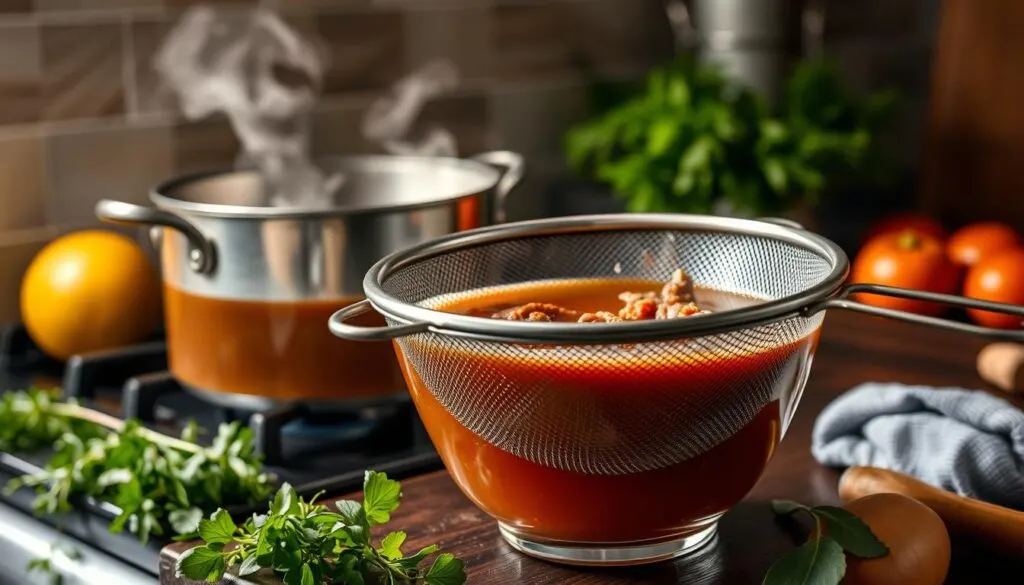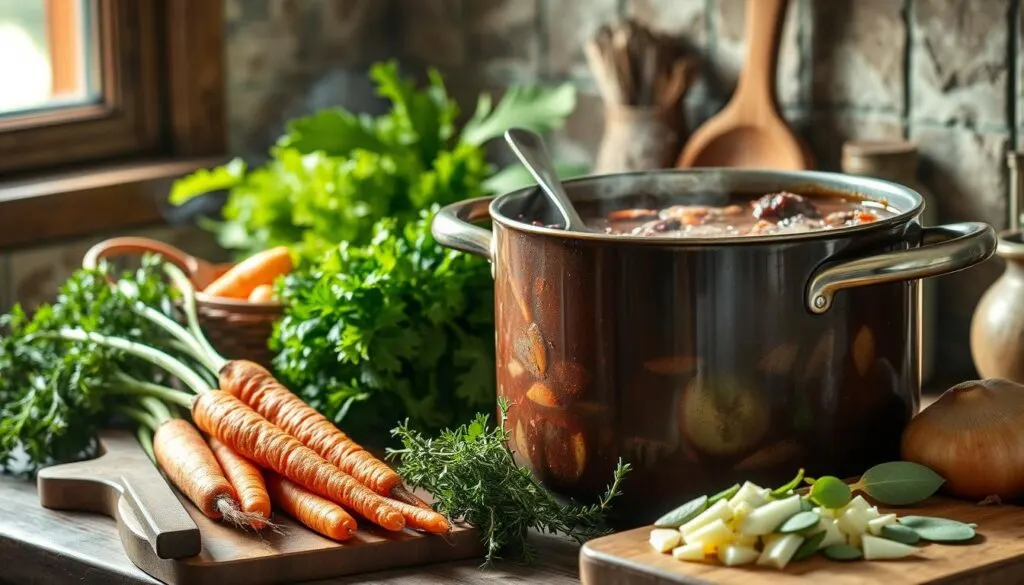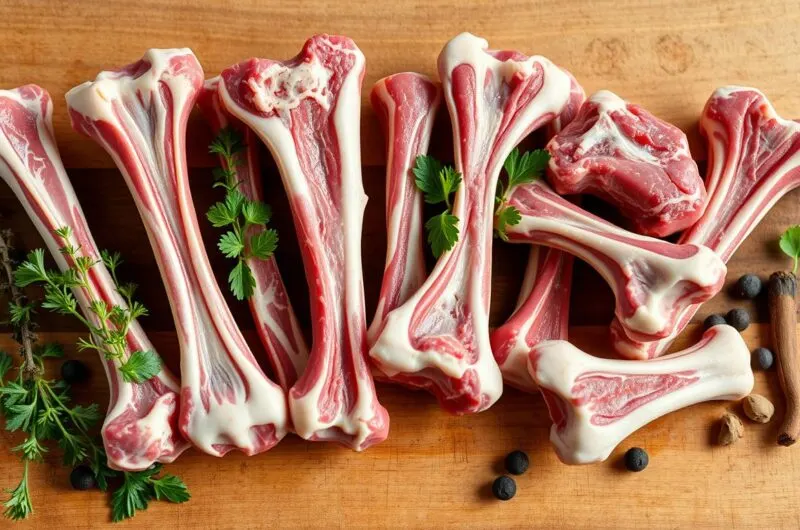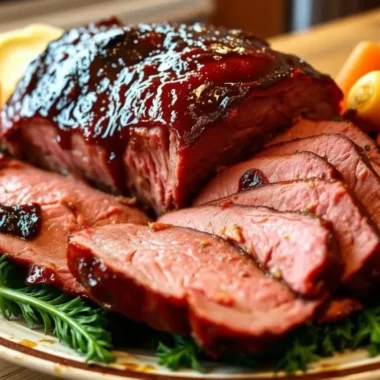As the cool autumn wind whispers through the kitchen window, the aroma of simmering beef bones and aromatic vegetables fills the air. This promises a comforting and nourishing treat. Homemade beef stock, with its deep, complex flavors, is a culinary treasure. It can elevate countless dishes, from hearty stews to flavorful risottos.
Whether you’re a seasoned home chef or a novice in the kitchen, mastering the art of making your own beef stock is rewarding. It will forever change the way you cook.
In this comprehensive guide, we’ll explore the secrets to crafting a rich and flavorful beef stock from scratch. You’ll discover the transformative power of homemade beef stock. It can enhance your culinary creations.
Table of Contents
Introduction to Beef Stock and Its Benefits
Beef stock is a rich, flavorful liquid that’s the base for many savory dishes. It’s different from beef broth, which includes meat and veggies. Beef stock is made mainly from beef bones, meat scraps, and veggies, simmered for hours to get the most flavor and nutrients.
What is Beef Stock?
Beef stock is a liquid packed with nutrients. It’s thicker and more gelatinous than broth. The long simmering process releases collagen and minerals from the bones, making it a collagen-rich broth full of health benefits.
Why Make Your Own Beef Stock?
- Control over ingredients: Making your own bone broth lets you avoid preservatives, additives, and too much sodium found in store-bought stocks.
- Richer flavor: Homemade beef stock tastes deeper and more robust, enhancing your soups, stews, and dishes.
- Cost-effectiveness: Making your own beef soup base at home is cheaper than buying pre-made stocks or broths.
- Customization: You can adjust your beef stock to fit your dietary needs or taste by changing the bones, veggies, and seasonings.
By making your own bone broth, you get a flavorful, nutrient-rich liquid. It can change your cooking and offer health benefits.
Essential Ingredients for Beef Stock
Making a rich beef stock starts with picking the right ingredients. The base of a great stock is the beef bones. They add gelatin, which makes the stock smooth and flavorful. A mix of aromatic veggies and fragrant herbs and spices also makes the stock delicious.
Types of Beef Bones to Use
Choosing different beef bones is key for a balanced stock. Here are some top picks:
- Beef marrow bones: These bones are full of gelatin, making the stock smooth.
- Beef shanks: Their connective tissue thickens the stock and adds body.
- Beef knuckles: These bones have lots of cartilage, boosting the gelatin and texture.
- Beef oxtail: Its gelatinous nature gives the stock a deep flavor and silky feel.
Vegetables That Enhance Flavor
Onions, carrots, and celery are essential for a flavorful stock. They add depth and a hint of sweetness.
Herbs and Spices for Aromatics
Herbs and spices like bay leaves, peppercorns, garlic, and thyme make the stock smell and taste amazing.
- Bay leaves: They add a warm, minty flavor.
- Peppercorns: A mix of black, white, and pink peppercorns adds complexity.
- Garlic: Whole or crushed cloves bring earthy, savory notes.
- Thyme: It adds a delicate, woody aroma.
By choosing the right bones, veggies, herbs, and spices, you can make a beef stock that’s rich and versatile.
| Ingredient | Contribution to Beef Stock |
|---|---|
| Beef marrow bones | High in gelatin, adds luxurious texture |
| Beef shanks | Connective tissue and collagen help thicken stock |
| Beef knuckles | Cartilage enhances gelatin content and mouthfeel |
| Beef oxtail | Gelatinous nature imparts deep, beefy flavor and silky consistency |
| Onions, carrots, celery | Aromatic vegetables add depth, complexity, and subtle sweetness |
| Bay leaves, peppercorns, garlic, thyme | Herbs and spices elevate the aroma and taste of the beef stock |
Recommended Equipment for Making Beef Stock
Making a delicious beef stock at home needs the right tools. From the stockpot to the roasting pan, each tool is key. Let’s look at what you need to make the best homemade beef stock.
Choosing the Right Pot
The base of your beef stock is the stockpot or Dutch oven. It should hold all the ingredients for good simmering and flavor extraction. A pot of at least 8 quarts is recommended, but 12 quarts or more is better for big batches.
The pot should have a heavy bottom and a tight lid. This keeps the temperature right during the long simmer.
Essential Utensils
- Roasting pan: A big, shallow roasting pan is key for browning bones and veggies. This step adds rich flavor to the stock.
- Fine-mesh strainer or cheesecloth: Straining the stock well is vital for a clear, smooth broth. A fine-mesh strainer or cheesecloth is needed for this.
- Slotted spoon: A slotted spoon helps remove foam or impurities that come up during simmering.
- Storage containers: Stock can be kept in the fridge for up to 1 week or frozen for 6 months. Use airtight containers or freezer-safe bags for storage.
With these tools, you’re ready to make a rich, tasty homemade beef stock. It will make your dishes even better.
Step-by-Step Guide to Preparing Beef Stock
Making beef stock at home is a fun cooking journey. The secret to great flavor is in how you prepare it. Let’s explore how to make amazing beef stock that will make your dishes better.
Preparing the Ingredients
Start by getting the right ingredients for your beef stock. You’ll need different beef bones like marrow bones, knuckle bones, and oxtail. Roast the bones and veggies like onions, carrots, and celery at 450°F for about 40 minutes. This step caramelizes the sugars, adding flavor.
Browning the Bones
After roasting, put the bones and veggies in a big stockpot. Use a bit of water to deglaze the roasting pan, getting all the browned bits. Add this liquid to the pot, along with cold water, herbs, and spices.
Simmering for the Perfect Flavor
Heat the mix until it boils, then lower the heat to a simmer. Remove any foam that forms. Let it simmer for 4-6 hours, adding water as needed to keep everything covered. Simmering is key to getting the best flavor from your ingredients.
The slow simmer turns simple ingredients into a rich, tasty beef stock. By following these steps, you’ll get a flavorful base for soups, stews, and more.
Cooking Time: How Long to Simmer Beef Stock
Creating a rich beef stock takes patience. It usually simmers for 4 to 12 hours. Knowing what affects this time helps you get the best flavors and texture in your homemade bouillon cubes or stock.
Factors That Influence Cooking Time
The bones you use, how intense you want the flavor, and the heat level matter. More bones and higher heat mean shorter cooking times. Less bones and lower heat lead to longer simmering for better flavor and gelatin.
Signs Your Stock Is Ready
As your stock simmers, you’ll see it’s done when it’s rich and deep in color. The flavor should be strong and beefy. It will also be thicker, thanks to gelatin from the bones.
When the liquid has reduced by about one-third, it’s time to strain and enjoy. Longer simmering times make the flavors more intense and the texture richer. Try different times to find what you like best.
Tips for Achieving a Richer Flavor
Creating a flavorful beef stock is all about unlocking the natural umami in your ingredients. To get a deeper, more complex taste, try these two easy tips:
Roasting Bones for Extra Depth
Roasting your beef bones before simmering is a game-changer. This step caramelizes the bones, bringing out their beef flavor enhancers. Roast them until they’re golden, then add them to your stock pot.
Adding Acids for Balance
A bit of acid can balance your beef stock’s flavors and pull out more minerals from the bones. Add a small amount of tomato paste or vinegar. This acidity will cut through the fat and umami in stock, making the flavors more balanced and harmonious.
Remember, it’s all about balance when seasoning. Don’t over-salt or over-season during cooking. Adjust the seasoning in your final dish to get the flavors just right.
With these simple tips, you’ll make a rich, flavorful beef stock. It will take your favorite recipes to the next level.
Straining and Storing Your Beef Stock
After simmering your beef stock, it’s time to strain and store it. Proper storage keeps your stock rich and flavorful. Let’s look at the best ways to strain and preserve your homemade beef broth.
Best Methods for Straining
Straining your beef stock removes solids like bones and herbs. The best method is to use a fine-mesh strainer with cheesecloth. This catches all particles, leaving you with clear stock. For clearer stock, strain it multiple times or use the egg white method.
How to Properly Store Beef Stock
Let your stock cool to room temperature before refrigerating or freezing. This step prevents harmful bacteria growth. When refrigerating, skim off any solidified fat before using.
Freezing is a great way to keep your stock’s flavor and nutrients. Portion it into airtight containers or ice cube trays for easy use. Homemade stock is healthier and more affordable than store-bought, with up to 10 cups frozen for 6 months.

By following these tips, you can enjoy your homemade beef stock for months. It’s a versatile ingredient that enhances your cooking and nourishes your family.
Freezing Beef Stock: Tips and Tricks
Homemade beef stock is a versatile and flavorful ingredient. It can elevate many dishes. But what if you have more stock than you can use right away? The answer is simple – freeze it! Freezing your homemade beef stock keeps its rich flavor and nutritional benefits for later.
Best Containers for Freezing
When freezing beef stock, use airtight containers to prevent freezer burn. Here are some good options:
- Freezer-safe plastic containers or bags: Leave about an inch of headspace for expansion.
- Ice cube trays: Freeze stock in portions, then transfer to a freezer bag for easy use.
- Glass jars: Mason jars or other heat-resistant glass containers work well, but leave enough headspace to prevent cracking.
Choose any container, but label it with the date and quantity. This helps keep track of its freshness.
Shelf Life of Frozen Beef Stock
Properly frozen beef stock stays good for up to 6 months at 0°F or below. It’s safe to eat forever if kept at this temperature. To thaw, use the refrigerator or the defrost setting on your microwave.
By freezing homemade beef stock, you can enjoy its rich flavor for months. Freeze it in portions for easy access. This way, you’ll always have this essential ingredient ready.
Using Beef Stock in Your Recipes
Beef stock is a versatile and flavorful ingredient that can elevate your cooking. It’s not just for sipping; it’s great in many recipes. Use it to make soups, braise meats, or enhance sauces and gravies. Beef stock is a kitchen staple that can truly transform your dishes.
Suggested Dishes That Benefit from Beef Stock
- French Onion Soup: The classic French dish is taken to new heights when made with a robust beef stock as the base.
- Beef Stew: Slow-simmered in a beef stock-based broth, this hearty stew becomes incredibly flavorful and satisfying.
- Pot Roast: Braising a tough cut of meat in beef stock results in a meltingly tender, flavor-packed dish.
- Cheeseburger Casserole: A five-star reviewer raved about the “cozy” and “comfort food” vibe of this beef stock-infused dish.
- Beef Stroganoff: The creamy sauce for this classic pasta dish is elevated with the addition of rich beef stock.
Substituting Beef Stock in Classic Recipes
When a recipe calls for water, bouillon cubes, or store-bought stock, consider substituting your homemade beef stock for a major flavor boost. It works wonderfully in soups, stews, braises, and even when cooking grains like rice or quinoa. The gelatin-rich consistency of beef stock also lends itself beautifully to sauces and gravies, helping to create a silky, velvety texture.
Remember, beef stock typically requires a longer simmering time of 4-6 hours to extract the maximum amount of gelatin, minerals, and nutrients from the bones. This results in a thicker, more concentrated liquid compared to the quicker cooking beef broth. Utilizing your homemade beef stock in your recipes will add an unparalleled depth of flavor and nutritional value to your meals.
Common Mistakes to Avoid When Making Beef Stock
Making beef stock at home is a rewarding experience. But, it’s key to avoid common stock-making errors to get a clear beef broth. This will make your recipes better. By avoiding these mistakes, your homemade beef stock will be amazing.
Overcooking vs. Under-cooking
Getting the cooking time right is crucial for beef stock. Boiling it can make it cloudy and bitter. On the other hand, not simmering it enough means missing out on flavors and nutrients.
Skimming Fat and Impurities
It’s important to skim the foam and impurities that rise during simmering. Not doing this can make your stock look murky and taste greasy. Make sure to remove these for a clean, pure-tasting stock.
| Common Mistakes | Consequences |
|---|---|
| Boiling instead of simmering | Cloudy, bitter-tasting stock |
| Not simmering long enough | Failure to extract full flavor and nutrients |
| Neglecting to skim fat and impurities | Murky appearance and greasy mouthfeel |
Avoiding these stock-making errors and following best practices will help. You’ll make a rich, flavorful, and clear beef broth. This will take your cooking to the next level.

Variations of Beef Stock to Try
While a classic beef stock is great, trying different variations can make your dishes even better. You can add herbal flavors or international tastes to your stock. There’s a lot to explore.
Herbal Beef Stock
For a fragrant twist, add fresh herbs like rosemary, sage, or tarragon to your stock. These herbs add depth and complexity. Just toss in a few sprigs while it simmers for amazing flavors.
Asian-Inspired Beef Stock
Try an Asian-inspired beef stock for a taste of the Far East. Use ginger, star anise, and lemongrass for aromatic flavors. Roasted garlic or caramelized onions add a rich taste. This stock is perfect for Asian dishes like pho or curries.
Try these variations to spice up your recipes. Whether you like the herbal taste or the bold Asian flavors, these stocks can make your dishes stand out.
“A well-crafted beef stock is the foundation of countless delicious dishes. Exploring different flavor profiles can take your cooking to the next level.”
| Variation | Key Ingredients | Recommended Dishes |
|---|---|---|
| Herbal Beef Stock | Rosemary, sage, tarragon | Soups, stews, braises |
| Asian-Inspired Beef Stock | Ginger, star anise, lemongrass | Pho, curries, Asian-inspired dishes |
Conclusion and Final Thoughts
Making homemade beef stock is a rewarding skill that can take your cooking to new levels. By following the steps in this guide, you can make a versatile and nutritious stock. This stock is great for many dishes.
Recap of Key Steps
Starting with the right bones is key to making homemade beef stock. Choose a mix of bones rich in marrow and meaty ones. Roasting the bones before simmering adds depth to the flavor.
Slow simmering with aromatic vegetables and herbs brings out the best in the stock. Straining and storing it properly keeps it fresh and of high quality.
Encouragement to Experiment with Flavors
This guide gives you a solid start for making great beef stock. But the real fun is in experimenting and making it your own. Try different bones, vegetables, and seasonings to create your unique recipe.
The more you make it, the more you’ll learn about its flavors and possibilities. Let your homemade beef stock be a source of pride and joy in your kitchen.
FAQ
What is beef stock?
Why should I make my own beef stock?
What are the key ingredients for making beef stock?
What equipment do I need to make beef stock?
How do I prepare and cook the beef stock?
How long should I simmer the beef stock?
How can I achieve a richer flavor in my beef stock?
How should I strain and store the beef stock?
How can I use the homemade beef stock in my recipes?
What are some common mistakes to avoid when making beef stock?
Can I experiment with different variations of beef stock?
Source Links
- Nothing Beats the Rich Flavor of Homemade Beef Stock – https://www.thespruceeats.com/how-to-make-rich-beef-stock-3057617
- Beef Broth in 15-min – https://stefaniaskitchenette.com/quick-beef-broth-recipe/
- How to Make Beef Stock the Old-Fashioned Way – https://www.tasteofhome.com/article/how-to-make-beef-stock/?srsltid=AfmBOoqcCN9Q662GtQQfaaA-NfSGoTDh09YQyaqMiLO_lw2G0fERCI-t
- Learn To Make Easy Homemade Beef Broth From Scratch – https://sustainableslowliving.com/beef-broth-from-scratch/
- Stock, Broth and Frequently asked questions – Low Tox Life – https://www.lowtoxlife.com/stock-broth-and-frequently-asked-questions/
- Beef Broth and Its Application in the Meat Plant – https://earthwormexpress.com/the-meat-factory/beef-broth-and-its-application-in-the-meat-plant/
- Original Beef Stock, 32 oz – https://www.kitchenbasics.com/our-products/original-products/original-beef-stock-32-oz
- Beef Stock vs Beef Broth: Which Should You Use for Your Next Recipe? – https://healofoods.com/blogs/healo-foods-food-blog/beef-stock-vs-beef-broth-which-should-you-use-for-your-next-recipe?srsltid=AfmBOop7SF03MWmwk7NxM4_y5Bx_jdXzPbpyatJB0Cxh7iylWhiqd2nb
- How to Make Beef Stock the Old-Fashioned Way – https://www.tasteofhome.com/article/how-to-make-beef-stock/?srsltid=AfmBOoqqh0WgxcwJNfmgu9KEIe9VahAf1VpLj_kMSaDesqLOLPL71UfL
- Taking Stock of Making Stock | Brooklyn Copper Cookware – https://brooklyncoppercookware.com/taking-stock-of-making-stock/
- Bone Broth Simmer Temperature Range – https://ask2.extension.org/kb/faq.php?id=859606
- How to Make Beef Stock the Old-Fashioned Way – https://www.tasteofhome.com/article/how-to-make-beef-stock/?srsltid=AfmBOorX5o3MJZXOmW0pY2DzwVcktse8_nK3uIQbGtOOtXraEC2tG7U7
- Brown beef stock from scratch (Escoffier style) — French Cooking Academy – https://www.thefrenchcookingacademy.com/recipes/escoffier-brown-stock
- Homemade Beef Stock Recipe – https://bowl-me-over.com/beef-stock/
- Quick Beef Stock Recipe | Chef Jean-Pierre – https://chefjeanpierre.com/recipes/quick-beef-stock/
- Homemade Beef Broth (Without Bones) – Alphafoodie – https://www.alphafoodie.com/homemade-beef-broth/
- Homemade Beef Broth Recipe – https://feedmebetter.com/beef-broth/
- Your Step-By-Step Guide To Making A Deeply Flavorful Stock – Tasting Table – https://www.tastingtable.com/1610631/how-to-make-broth-stock-guide/
- A Guide to Using Beef Broth in Place of Chicken Broth – https://www.mothersalwaysright.com/a-guide-to-using-beef-broth-in-place-of-chicken-broth/
- How to Make Beef Stock the Old-Fashioned Way – https://www.tasteofhome.com/article/how-to-make-beef-stock/?srsltid=AfmBOorfZYucDWjtl4PgElri3KlTkkoPNm1bfP6jA01_QCkoyh8qWqsT
- How to Make Beef Broth 3 Ways / Should I use a Slow-Cooker, Instant Pot or Stove Top Method? – Our Liberty House – https://www.ourlibertyhouse.com/blog/beef-broth-3-ways
- Nourishing Beef Bone Broth – https://www.raisinggenerationnourished.com/2014/02/nourishing-beef-bone-broth/
- 25 Freezable Bone Broth Recipes + Tips and Recommendations – https://onceamonthmeals.com/blog/recipe-roundups/freezable-bone-broth-recipes/
- How to Make Beef Stock the Old-Fashioned Way – https://www.tasteofhome.com/article/how-to-make-beef-stock/?srsltid=AfmBOoodAYg4xyjYCcgbtzK8RK8SXIAp9z9wGEqka9w5-EcXPJw3a9jM
- 26 Recipes To Use Up The Rest Of That Beef Broth In Your Pantry – https://www.southernliving.com/recipes-with-beef-broth-8546375?srsltid=AfmBOoqSY8Umy52_U3SA2i97DGoGTDrAI9CjfLVyAg89GhHZnrtiwcaS
- Beef Stock vs Beef Broth: Which Should You Use for Your Next Recipe? – https://healofoods.com/blogs/healo-foods-food-blog/beef-stock-vs-beef-broth-which-should-you-use-for-your-next-recipe?srsltid=AfmBOooLZiEav8MqaT0giv5qrG8Ca2GxA6z1m__l7n6XEeMWGD_bEz1n
- Beef stock – https://www.andy-cooks.com/blogs/recipes/beef-stock?srsltid=AfmBOoqA3LdvsXMDLrfKu3UUzorisHEXs9NEwiWUMR5CRd3sihjuKfE3
- 8 Mistakes To Avoid When Making Beef Stew – https://www.thespruceeats.com/mistakes-to-avoid-when-making-beef-stew-4178680
- Mistakes Everyone Makes When Cooking Homemade Broth – Food Republic – https://www.foodrepublic.com/1534861/mistakes-cooking-homemade-broth/
- 16 Best Substitutes For Beef Broth – Chowhound – https://www.chowhound.com/1704056/substitutes-beef-broth/
- Unlock Flavor With Stocks & Broths | Here’s Everything You Need to Know | Mediocre Chef – https://www.mediocrechef.com/blog/how-to-make-stocks-broths
- How to Make Beef Stock the Old-Fashioned Way – https://www.tasteofhome.com/article/how-to-make-beef-stock/?srsltid=AfmBOoqDMyePnCUVfmYaerh3UW0HjL3V83v8dhkpkz-HX1dXBmBJnaSH
- Commercial Broth – Ask Extension – https://ask2.extension.org/kb/faq.php?id=861889
- Hearty Beef and Barley Soup Recipe – https://creativescookery.com/hearty-beef-and-barley-soup-recipe/
Did You Try This Recipe ?
There are no reviews yet. Be the first one to write one.








